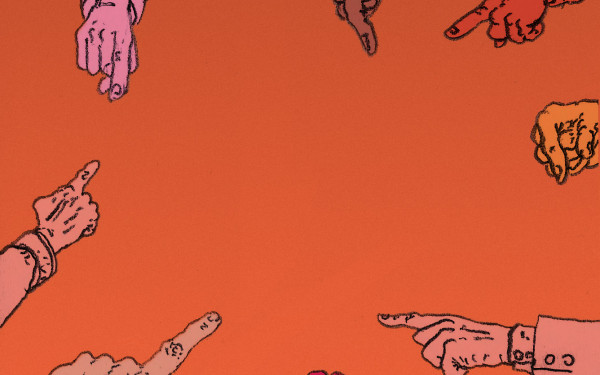A hero in the public interest
Journalism in 2021: On a quest through the digital age
Journalism is, in essence, a business of stories. Journalists curate the narratives of the world around them, weaving together facts with context and characters to create a compelling synopsis for their audience.
At its core, journalism is a convergence of plotlines. But it’s also a story in itself, and we are approaching this narrative’s true climax. Between lack of funding, and erosion of trust due to the spread of misinformation and disinformation on the internet, journalism is facing its biggest challenge yet.
Let me tell you a story.
In the beginning, there was an unsuspecting, ordinary hero. Thrust into an adventure, they meet a mentor, assemble allies, discover enemies and face numerous challenges along the way. After vanquishing the enemy in a decisive crisis, our hero returns home. Their adventures have transformed them, and they have gained insight, knowledge, or perhaps even a physical reward.
Sounds familiar? That’s because it is. This classic story trajectory is called the monomyth, or the hero’s journey. Joseph Campbell popularized the pattern in 1949, and it forms the backbone of many famous works such as Charlotte Brontë’s Jane Eyre, Herman Melville’s Moby Dick, and—perhaps most well-known—George Lucas’s Star Wars.
To understand journalism’s history, and project how it may develop in the future, we can chart its narrative along the hero’s journey.
We begin the story with the arrival of modern journalism in the early 17th century. Travellers would share their experiences abroad in pubs or coffeehouses, and locals would meet to discuss the latest news or exchange gossip and social trivia. Humans have a hunger for news, explains Mitchell Stephens in A History of News, and thus these exchanges were ordinary and expected.
The adventure sparks with the evolution of the first newspapers. Printers collected the stories shared in these gathering places and transferred them to paper. Information became more permanent and easier to discuss.
Politicians took notice. Support flowed into print news, and many successful newspaper entrepreneurs used partisan advantage to gain office themselves, reports the Canadian Encyclopedia section on journalism.
The discussion around free speech and free press arose in the early 1700s, but the concept was still in its infancy. It was not until 1835 that the press was established as a vehicle of legitimate dissent in Canada, when Joseph Howe was acquitted of libel against a Nova Scotian magistrate. This legal boost completed journalism’s transition from inexperienced trainee to vital voice in public debate.
Between lack of funding, and erosion of trust due to the spread of misinformation and disinformation on the internet, journalism is facing its biggest challenge yet.
The next 200 years saw journalism evolve, gather support, and face discontent. By the 1880s, larger news corporations such as Montreal’s La Presse and the Toronto Star had displaced many private printing operations. The “big-city, people’s journalism” prioritized sensational news over partisan opinion pieces, and the need for a new income source contributed to journalism’s commercialization.
A crucial step in the hero’s journey is the Ordeal, in which the hero flounders and could fail. If they triumph, they are irrevocably transformed and commence their journey homeward. While the advent of radio and television struck a heavy blow to traditional media, I posit that journalism’s Ordeal was adapting to the internet and the digital revolution.
The internet has undoubtedly changed the media landscape. Digital journalism offers new opportunities to engage with multiple publics and tell multimedia, interactive stories. Technology allows for more powerful data searches and analyses. However, it’s rarely utilized to its full potential.
Journalism’s monomyth stands before its penultimate challenge. It has changed considerably over the course of its journey, and it’s unclear how it will emerge from the narrative’s peak.
The Canadian Association of Broadcasters warns that as many as 40 local television outlets and 200 Canadian radio stations might not survive the next three years due to financial stresses. According to J-Source, over 250 Canadian news outlets have closed from 2008-2018. Funding for the CBC has decreased by 28 per cent since 1985, and the corporation has reported a net deficit every year since 2013.
However, journalism is adapting. Journalists are connecting with audiences more intimately through social media and mobile storytelling like podcasts. Independent media outlets are creating entrepreneurial and innovative spaces for information to bypass scepticism facing large news conglomerates. Journalism is still on track with the hero’s journey, and the monomyth guarantees that once victorious, journalism will be stronger, more resilient, and matured.
This article is part of a series which discusses different aspects of journalism as a way of keeping a record of the scope of the profession in 2021. Topics range from the impact of gender in journalism to its history.






